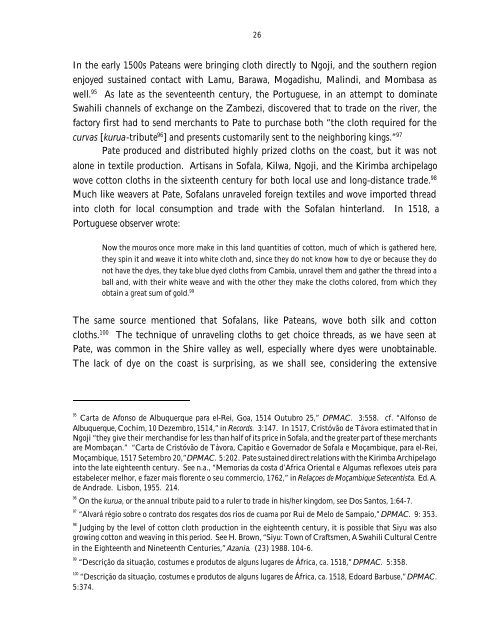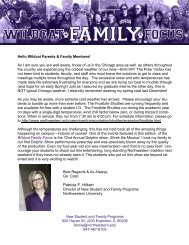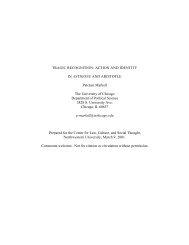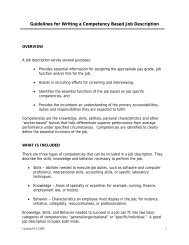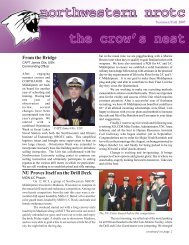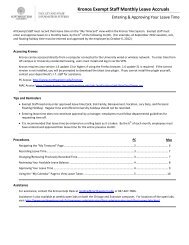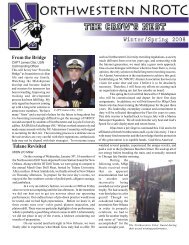Artistry Permits and Custom May Ordain - Northwestern University
Artistry Permits and Custom May Ordain - Northwestern University
Artistry Permits and Custom May Ordain - Northwestern University
Create successful ePaper yourself
Turn your PDF publications into a flip-book with our unique Google optimized e-Paper software.
26<br />
In the early 1500s Pateans were bringing cloth directly to Ngoji, <strong>and</strong> the southern region<br />
enjoyed sustained contact with Lamu, Barawa, Mogadishu, Malindi, <strong>and</strong> Mombasa as<br />
well. 95 As late as the seventeenth century, the Portuguese, in an attempt to dominate<br />
Swahili channels of exchange on the Zambezi, discovered that to trade on the river, the<br />
factory first had to send merchants to Pate to purchase both “the cloth required for the<br />
curvas [kurua-tribute 96 ] <strong>and</strong> presents customarily sent to the neighboring kings.” 97<br />
Pate produced <strong>and</strong> distributed highly prized cloths on the coast, but it was not<br />
alone in textile production. Artisans in Sofala, Kilwa, Ngoji, <strong>and</strong> the Kirimba archipelago<br />
wove cotton cloths in the sixteenth century for both local use <strong>and</strong> long-distance trade. 98<br />
Much like weavers at Pate, Sofalans unraveled foreign textiles <strong>and</strong> wove imported thread<br />
into cloth for local consumption <strong>and</strong> trade with the Sofalan hinterl<strong>and</strong>. In 1518, a<br />
Portuguese observer wrote:<br />
95 Carta de Afonso de Albuquerque para el-Rei, Goa, 1514 Outubro 25,” DPMAC. 3:558. cf. “Alfonso de<br />
Albuquerque, Cochim, 10 Dezembro, 1514,” in Records. 3:147. In 1517, Cristóvão de Távora estimated that in<br />
Ngoji “they give their merch<strong>and</strong>ise for less than half of its price in Sofala, <strong>and</strong> the greater part of these merchants<br />
are Mombaçan.” “Carta de Cristóvão de Távora, Capitão e Governador de Sofala e Moçambique, para el-Rei,<br />
Moçambique, 1517 Setembro 20,” DPMAC. 5:202. Pate sustained direct relations with the Kirimba Archipelago<br />
into the late eighteenth century. See n.a., “Memorias da costa d’Africa Oriental e Algumas reflexoes uteis para<br />
estabelecer melhor, e fazer mais florente o seu commercio, 1762,” in Relaçoes de Moçambique Setecentista. Ed. A.<br />
de Andrade. Lisbon, 1955. 214.<br />
96 On the kurua, or the annual tribute paid to a ruler to trade in his/her kingdom, see Dos Santos, 1:64-7.<br />
97 “Alvará régio sobre o contrato dos resgates dos rios de cuama por Rui de Melo de Sampaio,” DPMAC. 9: 353.<br />
98 Judging by the level of cotton cloth production in the eighteenth century, it is possible that Siyu was also<br />
growing cotton <strong>and</strong> weaving in this period. See H. Brown, “Siyu: Town of Craftsmen, A Swahili Cultural Centre<br />
in the Eighteenth <strong>and</strong> Nineteenth Centuries,” Azania. (23) 1988. 104-6.<br />
99 “Descrição da situação, costumes e produtos de alguns lugares de África, ca. 1518,” DPMAC. 5:358.<br />
100 “Descrição da situação, costumes e produtos de alguns lugares de África, ca. 1518, Edoard Barbuse,” DPMAC.<br />
5:374.<br />
Now the mouros once more make in this l<strong>and</strong> quantities of cotton, much of which is gathered here,<br />
they spin it <strong>and</strong> weave it into white cloth <strong>and</strong>, since they do not know how to dye or because they do<br />
not have the dyes, they take blue dyed cloths from Cambia, unravel them <strong>and</strong> gather the thread into a<br />
ball <strong>and</strong>, with their white weave <strong>and</strong> with the other they make the cloths colored, from which they<br />
obtain a great sum of gold. 99<br />
The same source mentioned that Sofalans, like Pateans, wove both silk <strong>and</strong> cotton<br />
cloths. 100 The technique of unraveling cloths to get choice threads, as we have seen at<br />
Pate, was common in the Shire valley as well, especially where dyes were unobtainable.<br />
The lack of dye on the coast is surprising, as we shall see, considering the extensive


